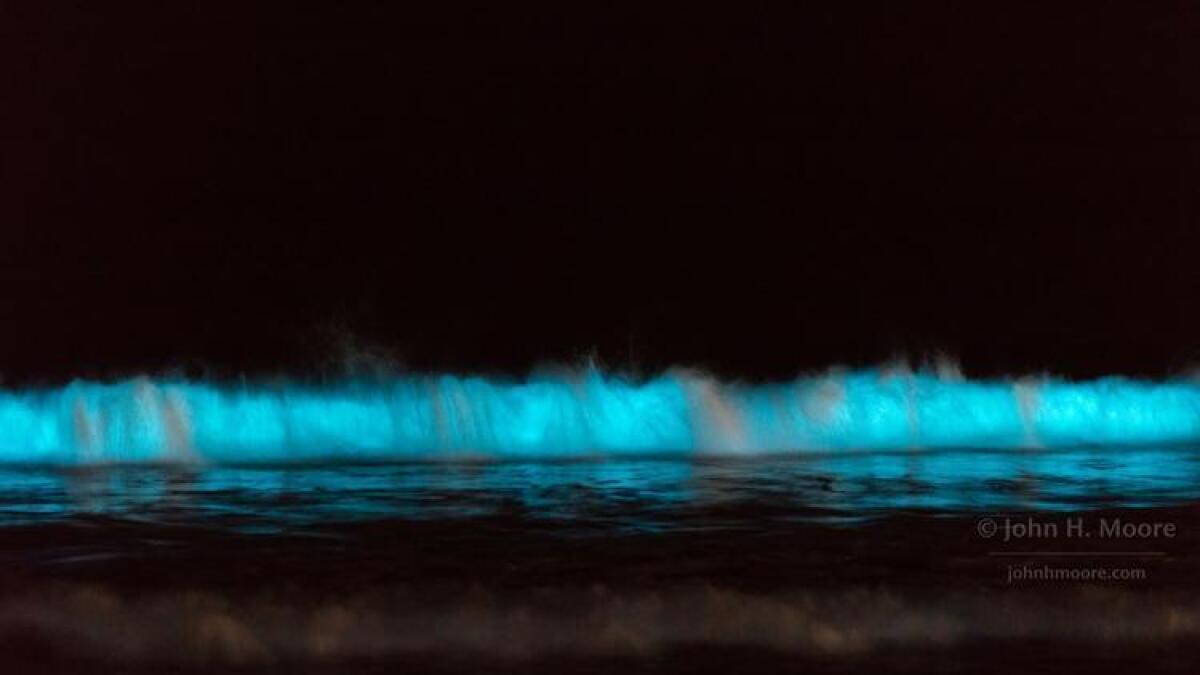 |
| Bioluminescent algae light-up the waves at La Jolla Shores. Image courtesy of John H. Moore at The San Diego Union-Tribune. |
"Bioluminescence tonight!" read the email sent over the Scripps list-serve. A group of scientists carefully monitoring the water off of the pier at the Scripps Institution of Oceanography in La Jolla had picked up signals of a bioluminescent bloom to occur later that week.
Bioluminescence is a sort of light given-off by certain organisms. In the ocean, and particularly that week at La Jolla Shores, red algae that glows when disturbed can cause grandiose displays of blue light when their population numbers are high. This is sometimes called a "Red Tide" and can be extremely toxic depending on the species of algae present.
Beyond the blue, I saw this bloom as an opportunity to try to culture some cool bacterial species from the algae-infested waters. So, when my professor invited me on a bioluminescent night swim with the rest of the lab, I tucked a few Falcon tubes into my dive glove to take some water samples with while swimming through the brilliant blue bloom.
Upon return to the lab, I spread the samples onto different types of agar plates. Agar has the texture of stiff jelly and is what scientists put in Petri dishes to grow bacteria on in the lab. It contains most of the nutrients certain bacterial species need depending on their preferences.
After waiting a few days, I noticed a neat little orange spot on one of my plates. It was a sort of iridescent, peachy color, so I isolated it onto a new plate. After the isolate grew up and I saw that it was free of contaminants, I was able to extract the 16S rRNA from the bacterial cells and sequence it.
After making more copies of the 16S rRNA with a technique called PCR, making sure I had bacterial 16S rRNA (instead of fungal) by running a bit of the sample through an agarose gel, and sending the RNA to a sequencing lab (science, science, science), I was able to identify the species name of my mystery bacteria.
Flammeovirga arenaria--the orange bacterial species I isolated--doesn't seem to have been studied much in the past. From Wikipedia, I know that it was originally isolated from Mexican sands, which leads me to believe it was independent from the bioluminescent bloom. Nevertheless, I still think the mystery work of solving an unknown bacteria's species name is one of the most satisfying tasks in the world!
I always wonder what more there is to find and learn about these small but tenacious organisms. With so little studied on this particular species of bacteria, I wonder what brought it all the way to La Jolla, and what other mysteries its genome could reveal about its function.
There's always more to discover!
No comments:
Post a Comment